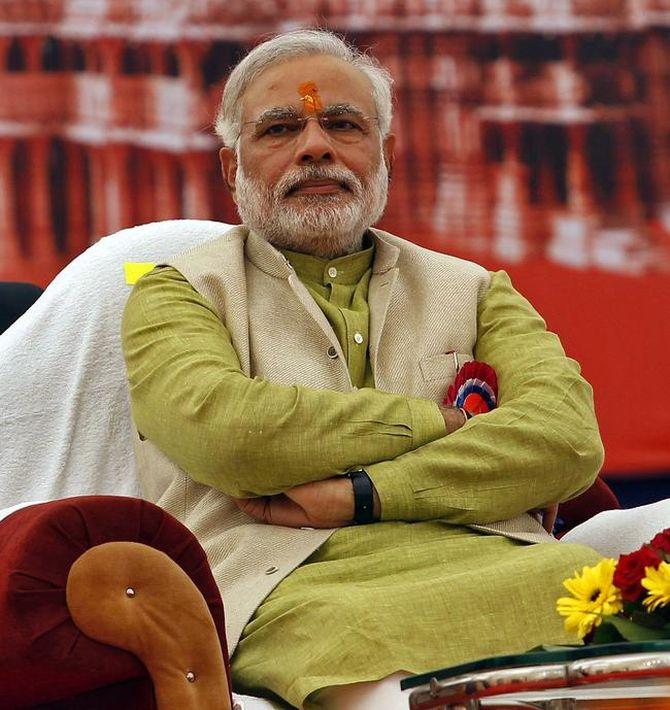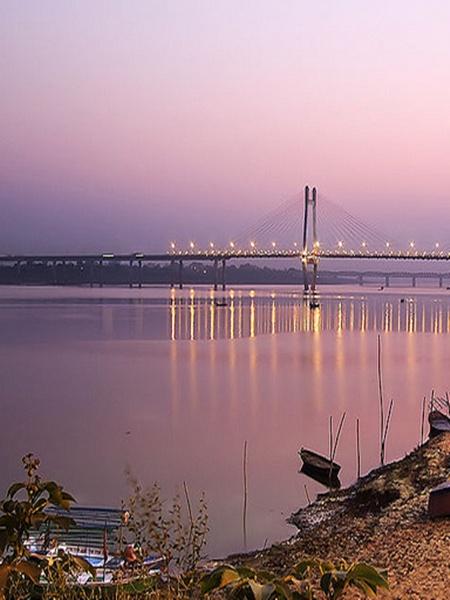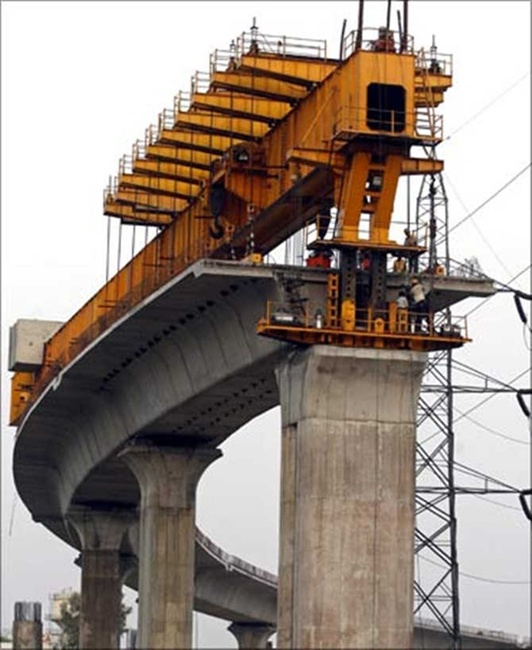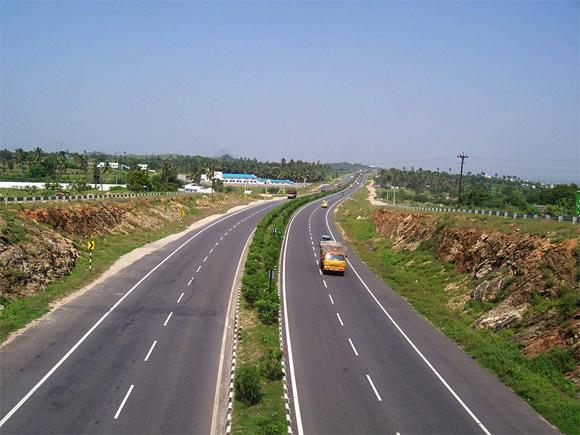 | « Back to article | Print this article |
3 challenges Narendra Modi will face if he becomes the PM
It will be a tough task for BJPs prime ministerial candidate Narendra Modi to revive capex cycle in infra sector, if he becomes the next prime minister.
It will be tough for Modi to keep his promise of kick-starting the capex cycle since examples from the infrastructure and power sector show that not all projects are financially viable.
In the deification process of Narendra Modi, we have been told he wrestled and brought home an alligator when a kid. This is to purportedly convince the remaining few sceptics that he can do anything.
Like reviving the stalled investment cycle in infrastructure, for instance.
Click NEXT for more...
3 challenges Narendra Modi will face if he becomes the PM
For economists and foreign institutional investors, this has been another of those naive, under-analysed, oversimplified perspectives about what Modi can do as prime minister.
The reality is a tad more complex and merits a bit of clear thinking.
One fond and utterly false notion that is propagated by Bharatiya Janata Party lovers is that it is because of the National Democratic Alliance (NDA)’s “good work” that the United Progressive Alliance (UPA) saw high growth when it came to power.
This assertion is never supported by any data, simply because there are no data that supports it.
The only real “lost half decade” in the past 23 years was the NDA period, across parameters of growth, equity, infrastructure investment and indebtedness.
Gross fixed capital formation remained at 25 per cent of gross domestic product (GDP) under the NDA, but jumped to 33 per cent right from the time the UPA came to power, and has remained there ever since.
Infra spend as percentage of GDP jumped to eight per cent under the UPA, from five per cent under the NDA.
Click NEXT for more...
3 challenges Narendra Modi will face if he becomes the PM
That said, the fact is that the capex cycle has indeed slowed markedly in the past few years. Why?
The reason is simple: infrastructure, on a macro basis, simply doesn’t generate adequate profits, cash and returns to attract private investment.
Infrastructure is basically a utility business. It should ordinarily be done by the state. But when the state lacks resources, it gets private capital in.
In boom times, the infra business looked seductive, and sucked in billions.
But no investor looked at the business closely: long gestation, huge capex, minimal profitability because of low paying capacities of users, and endless negative cash generation.
We pointed all this out in a research note in late 2007, only to be laughed out of many offices.
Click NEXT for more...
3 challenges Narendra Modi will face if he becomes the PM
That said, the fact is that the capex cycle has indeed slowed markedly in the past few years. Why?
The reason is simple: infrastructure, on a macro basis, simply doesn’t generate adequate profits, cash and returns to attract private investment.
Infrastructure is basically a utility business. It should ordinarily be done by the state. But when the state lacks resources, it gets private capital in.
In boom times, the infra business looked seductive, and sucked in billions. But no investor looked at the business closely: long gestation, huge capex, minimal profitability because of low paying capacities of users, and endless negative cash generation.
We pointed all this out in a research note in late 2007, only to be laughed out of many offices.
Click NEXT for more...
3 challenges Narendra Modi will face if he becomes the PM
Look at roads: the early bidders got sweet deals because of political patronage (don’t even think of doing any infrastructure business without this secret sauce), but also because they were early in the game.
The moment their numbers became public, dozens of new bidders jumped into the fray, and drove down profitability straight into
losses. The fact is: it will cost the same to build a road in India as it will in a developed country, but the paying capacity of the customer is 1/20th.
In power, cosy deals gave some power companies their initial cash cows.
But the moment lemming-like corporate India figured out that this was the way to raise billions, bidding wars erupted with no heed to the vicissitudes of feedstock prices, and other key variables.
The result is there for all to see. How is the UPA to blame for this?
The fact is, investors have woken up, belatedly, to the terrible business characteristics of the infrastructure business.
So have banks. Hence, both equity and debt markets will not give any sizeable money to this sector for a while to come.
Click NEXT for more...
3 challenges Narendra Modi will face if he becomes the PM
Too much is made of “delays in clearances”. We think this is just a red herring.
Indian promoters are a resourceful lot, and it is inconceivable that they couldn’t get a file cleared if they so dearly wanted.
The reality is that those projects, bid for at the height of the bull market, are simply not viable, Hence, just leave the file with the ministries and keep blaming the UPA. Keeps everybody happy.
Can Modi somehow ensure viable returns for infra players? Can he coax equity markets and banks into lending money to this pariah sector?
Given the utility nature of the infra business, any project won on the basis of a transparent bidding mechanism, will never have any reasonable profit in it.
Infra can make money only in select, plum projects (such as the Delhi Metro), and in projects awarded on the sly at the state level.
At the central level, under the prying eyes of the courts, media, the Central Bureau of Investigation, Central Vigilance Commission, awarding sweet-heart deals to a favoured few industrialists will be well-nigh impossible.
Now, that’s a problem for the Great White Hope of Indian politics, right?
Click NEXT for more...
3 challenges Narendra Modi will face if he becomes the PM
The only solution is for the government to start spending. But given the obsessive focus we have on the fiscal deficit, this will be a tough call.
The way large-scale infra spending happens in other countries is (a) through state-owned enterprises or (b) a handful of large private sector contractors (like in the US and Europe) who cartelise the market and divvy up the spoils through controlled, pre-arranged bidding. Nowhere in the world do 40 firms vie for a single road project like in India.
The only answer we have is that infra spending has to be done slowly, allowing returns to catch up and keep pace with investment, and should never be grandiose (Rs 800 crore or Rs 80 billion) per km bullet trains, for instance!). If we grow slower, so be it.
Infrastructure binges are the surest way to bankruptcy as China and others are realising.
Click NEXT for more...
3 challenges Narendra Modi will face if he becomes the PM
Not to mention a degraded environment. As proponents of long, slow, distance running will tell you, the trick is never to run so fast as to build lactic acid in muscles.
That way, you will outlast most, It’s exactly the same in infra: build carefully, and don’t overspend such that the lactic acid of debt and interest burden kill the nation’s balance sheet.
Build two-lane highways, then upgrade to four, then to six, and so on.
It is surprising how easily everybody has swallowed the tripe about how effortlessly Modi will kick-start the capex cycle. Modi’s scale of over-commitment across fronts makes a mid-cap promoter look pedestrian.
We have asked even fewer questions of his economic model, than we asked Reliance Power and DLF about theirs, in their IPO roadshows. We know how those ended.
Wrestling with an alligator may turn out to be infinitely easier than reviving the investment cycle.








